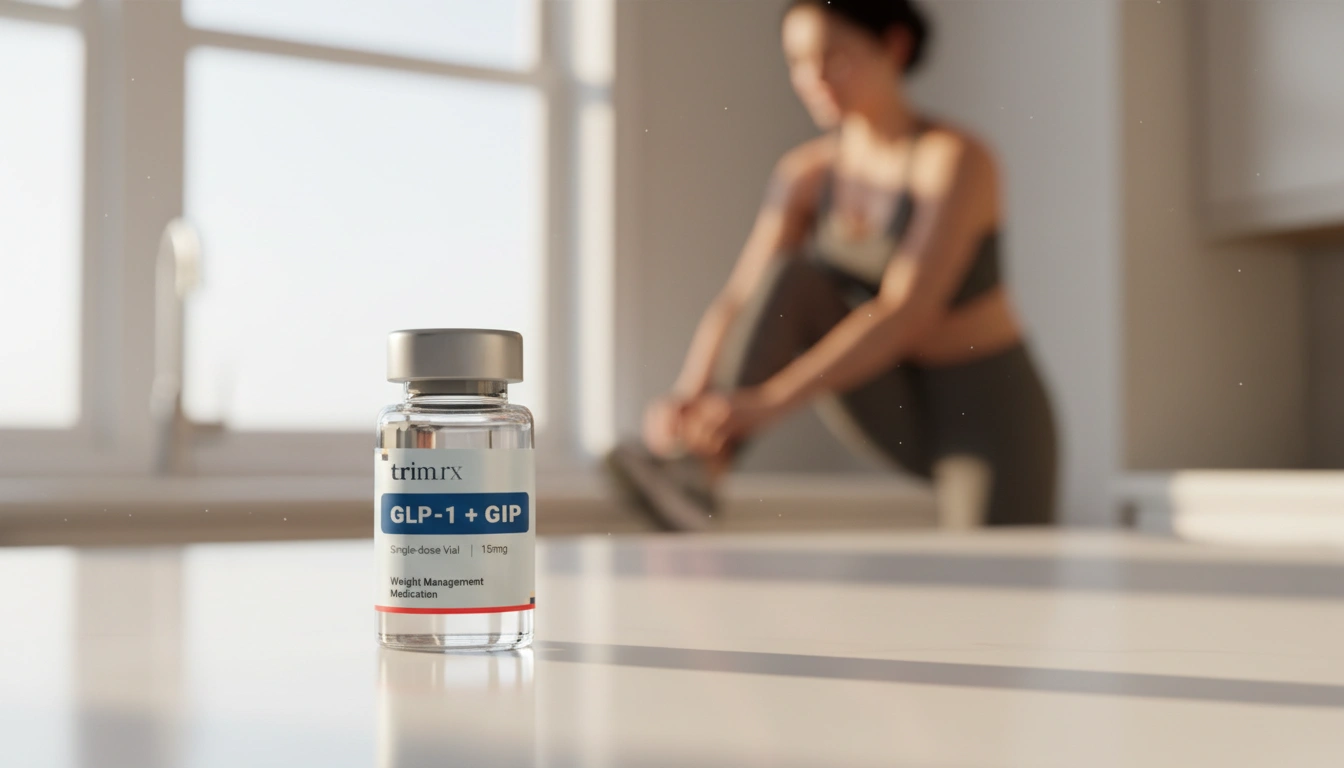Does GLP-1 Have to Be Injected? Exploring Your Options

Introduction
When discussing weight management and diabetes treatment, the conversation often leads to GLP-1 medications. These drugs have gained significant attention for their effectiveness in controlling blood sugar levels and promoting weight loss. However, a common question arises: Does GLP-1 have to be injected?
The answer is not as straightforward as it might seem. While many GLP-1 medications are indeed injectable, there are also oral options available. In this blog post, we will explore the essential aspects of GLP-1 medications, their administration methods, and what that means for individuals seeking personalized weight loss solutions.
Our aim is to provide clarity on the different GLP-1 options available, ensuring you understand what works best for your lifestyle and health needs. We’re excited to embark on this journey together, exploring the nuances of GLP-1 medications and how they fit into the broader context of weight management and diabetes care.
GLP-1, or glucagon-like peptide-1, is a hormone that plays a critical role in regulating blood sugar levels and appetite. Initially discovered for its ability to stimulate insulin secretion, GLP-1 has since become a focal point in diabetes management and weight loss strategies. With the FDA’s approval of various GLP-1 agonists, many people are now asking whether these medications must be injected or if they can be taken in pill form.
Understanding the administration methods and effects of GLP-1 medications is essential for individuals considering these options for weight management or diabetes control. By the end of this post, you’ll have a comprehensive understanding of the different GLP-1 medications available, including their administration routes, benefits, side effects, and how they align with our personalized approach at TrimRx.
We will delve into the historical development of GLP-1 agonists, their mechanisms of action, and provide guidance on making informed decisions about your health. Together, we’ll explore how these medications can be part of a broader strategy for achieving sustainable weight loss and better health outcomes.
Understanding GLP-1 and Its Role in Weight Loss
What is GLP-1?
GLP-1 is a hormone secreted by the intestines during food intake. It has multiple roles, including stimulating insulin secretion, inhibiting glucagon release, slowing gastric emptying, and promoting satiety. These actions make GLP-1 a vital player in managing blood sugar levels, particularly for individuals with type 2 diabetes.
The Mechanism of GLP-1 Agonists
GLP-1 agonists are synthetic compounds designed to mimic the effects of natural GLP-1. By binding to GLP-1 receptors in the body, these medications enhance insulin secretion when glucose levels are elevated, decrease glucagon levels, and slow down gastric emptying. This combination of effects helps to lower blood sugar levels and can also lead to weight loss by reducing appetite.
The FDA Approval of GLP-1 Medications
The first GLP-1 agonist, exenatide, was approved by the FDA in 2005, paving the way for numerous other medications in this class. Today, several GLP-1 agonists are available for treating type 2 diabetes and obesity, including:
- Ozempic® (semaglutide injection)
- Wegovy® (semaglutide injection for weight loss)
- Mounjaro® (tirzepatide injection)
- Victoza® (liraglutide injection)
- Trulicity® (dulaglutide injection)
- Rybelsus® (oral semaglutide)
The evolution of these medications highlights their increasing popularity and effectiveness, leading to a greater interest in how they can be administered.
Injectable vs. Oral GLP-1 Medications
Injectable GLP-1 Medications
Most GLP-1 medications are administered via injection. These injections are typically given subcutaneously, meaning the medication is injected into the fatty tissue just under the skin, commonly in the abdomen, thighs, or upper arms. The frequency of injections varies depending on the specific medication:
- Once a week: Ozempic, Trulicity, Bydureon
- Once a day: Victoza, Rybelsus (though Rybelsus is oral)
Injectable GLP-1 medications offer nearly 100% bioavailability, meaning almost all of the medication enters the bloodstream effectively. This high absorption rate contributes to their strong results in blood sugar control and weight loss.
Oral GLP-1 Medications
For those who prefer not to inject, there is an oral option available—Rybelsus (oral semaglutide). While the convenience of a daily pill can be appealing, it’s essential to recognize that oral GLP-1 medications have a different absorption profile.
Oral semaglutide is subject to degradation by stomach acid and digestive enzymes, resulting in lower bioavailability—less than 1% of the medication in each pill reaches the bloodstream. This means that higher doses are required to achieve similar effects as injectable forms, which may lead to increased side effects.
Comparing the Two Administration Routes
| Feature | Injectable GLP-1 | Oral GLP-1 |
|---|---|---|
| Absorption | High (nearly 100%) | Low (<1%) |
| Frequency | Weekly or daily | Daily |
| Convenience | Requires injection | Convenient pill form |
| Dosing Variability | Consistent | Dependent on meal timing and adherence |
| Side Effects | Gastrointestinal issues, potential injection site reactions | Gastrointestinal issues, potentially less effective |
While oral GLP-1 options may appear more convenient, it is essential to consider the differences in efficacy, absorption, and potential side effects.
The Benefits of GLP-1 Medications
Weight Loss
GLP-1 medications have shown remarkable results in aiding weight loss, making them a popular choice for individuals struggling with obesity. Clinical trials have reported average weight reductions ranging from 15% to 20% for injectable forms like Wegovy and Mounjaro. The hormonal effects of GLP-1 agonists not only help control blood sugar but also reduce appetite and increase feelings of fullness, which can lead to sustainable weight loss.
Diabetes Management
For those with type 2 diabetes, GLP-1 medications can significantly improve blood sugar control. By enhancing insulin secretion and suppressing glucagon, these medications help lower A1C levels and reduce the risk of diabetes-related complications.
Cardiovascular Benefits
Research has shown that some GLP-1 medications also provide cardiovascular benefits, reducing the risk of major cardiovascular events in patients with type 2 diabetes. This makes GLP-1 agonists an attractive option not only for weight management but also for overall heart health.
Potential Side Effects of GLP-1 Medications
Common Side Effects
While GLP-1 medications can be highly effective, they are not without side effects. Common side effects include:
- Nausea
- Vomiting
- Diarrhea
- Constipation
These gastrointestinal side effects are often more pronounced when starting the medication or increasing the dosage. However, many individuals find that these symptoms diminish over time as their bodies adjust.
Serious Side Effects
In rare cases, more severe side effects may occur, such as:
- Pancreatitis: Inflammation of the pancreas, which can cause severe abdominal pain.
- Kidney issues: Potential worsening of kidney function, particularly in those with pre-existing conditions.
- Allergic reactions: Some individuals may experience allergic reactions, including swelling or difficulty breathing.
It’s crucial to communicate with your healthcare provider about any side effects experienced while on GLP-1 medications, ensuring timely intervention when necessary.
Making an Informed Decision
Consider Your Lifestyle
When considering GLP-1 medications, it’s essential to evaluate your lifestyle and preferences. If you’re comfortable with regular injections and seeking maximum efficacy, injectable GLP-1s may be the best choice. Conversely, if you prefer the convenience of a pill and are willing to adhere strictly to dosing guidelines, an oral option like Rybelsus may suit you better.
Consult with Healthcare Professionals
At TrimRx, we encourage individuals to consult with healthcare professionals to determine the most suitable GLP-1 option for their unique circumstances. Our personalized assessment quiz can help identify eligibility for prescription weight loss medications, ensuring you receive tailored recommendations that align with your health goals.
Take our free assessment quiz to see if you qualify for our prescription weight loss medications: Take the Quiz.
Integrating GLP-1 with Other Weight Loss Strategies
It’s essential to remember that GLP-1 medications are most effective when combined with lifestyle modifications, including dietary changes and regular exercise. At TrimRx, we believe in a comprehensive approach to weight management that encompasses medical supervision, nutrition guidance, and ongoing support.
Conclusion
In summary, while many GLP-1 medications are injected, there are oral options available that can offer meaningful benefits for weight loss and diabetes management. Understanding the differences between these administration methods is crucial for making informed choices about your health.
Whether you opt for an injectable or an oral GLP-1 medication, working with healthcare professionals to tailor your treatment plan is essential for achieving sustainable weight loss and improved health outcomes. Remember, each person’s journey is unique, and at TrimRx, we are here to support you every step of the way with personalized weight loss solutions.
If you’re curious about how GLP-1 medications can fit into your weight loss journey, we invite you to explore our quick-access supplements, such as our GLP-1 Daily Support and Weight Loss Boost, to help enhance your overall wellness during this transformative process:
- GLP-1 Daily Support: Explore Here
- Weight Loss Boost: Explore Here
Together, we can work towards achieving your health and wellness goals!
FAQ
What are GLP-1 medications used for?
GLP-1 medications are primarily used to manage type 2 diabetes and promote weight loss. They help regulate blood sugar levels and can lead to significant weight reduction.
Do I have to inject GLP-1 medications?
While most GLP-1 medications are administered through injections, there is an oral option available (Rybelsus). It’s essential to consider your preferences and lifestyle when choosing between injections and oral medications.
What are the common side effects of GLP-1 medications?
Common side effects include nausea, vomiting, diarrhea, and constipation. These are often more pronounced at the beginning of treatment but may subside as the body adjusts.
Can GLP-1 medications be used for weight loss?
Yes, certain GLP-1 medications are specifically approved for weight loss, particularly in individuals with obesity or overweight conditions.
How can I determine if GLP-1 medications are right for me?
Consulting with healthcare professionals is crucial. You can also take our free assessment quiz to identify if you qualify for our prescription weight loss medications.
Are there any serious side effects to be aware of?
While most side effects are mild, serious complications can occur, including pancreatitis and allergic reactions. It’s important to communicate any concerning symptoms with your healthcare provider.

Transforming Lives, One Step at a Time
Keep reading
Vitamin B12 and GLP-1 Medications: What to Know
GLP-1 medications can lower B12 absorption and intake; learn symptoms, food sources, supplement options, and how to monitor levels.
Semaglutide Injection Site Reactions: What To Know
Learn why semaglutide injections can cause redness, swelling or nodules, how to prevent and treat them, and when to seek medical care.
TrimRx vs Friday’s
Compare TrimRx and Friday’s telehealth GLP-1 weight-loss programs: pricing, medical support, coaching, delivery, and which fits your needs.



